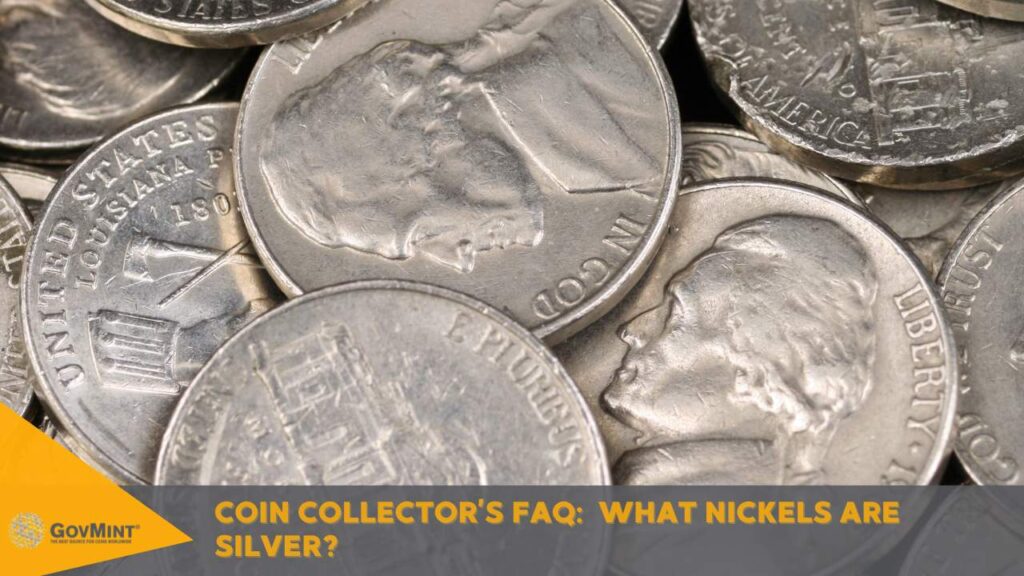What Nickels Are Silver?
While it is often overlooked in everyday commerce, the U.S. nickel has one of the most fascinating histories of America’s circulating coins. From the early Shield and Liberty Head designs to the iconic Buffalo and Jefferson Nickels, these five-cent pieces have undergone significant changes over the years. One of the most notable transformations occurred during World War II when nickel became a critical war material. As a result, the U.S. Mint produced silver nickels from 1942 to 1945, creating a unique and valuable collector’s item.In this comprehensive guide, we’ll explore which nickels are silver, how to identify them, their value, and the historical context that led to their creation. Whether you’re a coin collector, history enthusiast, or simply curious about the coins in your pocket, this article will provide you with a wealth of information about these remarkable silver coins.
The History of the U.S. Nickel
The U.S. nickel has a long and storied history, dating back to its introduction in 1866. The first nickel coin, known as the Shield Nickel, was designed by James B. Longacre and featured a shield on the obverse and a wreath on the reverse. This design was followed by the Liberty Head Nickel (1883-1912) and the Buffalo Nickel (1913-1938), both of which have become iconic in American numismatics.In 1938, the Jefferson Nickel was introduced, featuring a portrait of Thomas Jefferson on the obverse and his home, Monticello, on the reverse. This design, created by Felix Schlag, has remained the standard for the U.S. nickel ever since. However, the composition of the nickel underwent a significant change during World War II, leading to the creation of the silver nickel.
The Silver Nickel Years: 1942-1945
As the United States entered World War II in 1941, the demand for nickel, a critical war material, skyrocketed. Nickel was used in the production of ordnance, armor plate, and even portable bridges. To conserve this valuable resource, the U.S. Mint decided to change the composition of the nickel in 1942.Instead of the standard 75% copper and 25% nickel alloy, the new composition consisted of 56% copper, 35% silver, and 9% manganese. These coins, often referred to as “war nickels” or “silver nickels,” were minted from 1942 to 1945. The silver content was added to preserve the nickel for military use while still maintaining the size and weight of the coin.To distinguish these silver nickels from the regular copper-nickel coins, the U.S. Mint added a large mintmark (“P,” “D,” or “S”) above Monticello on the reverse. This made it easier to identify and remove the silver nickels from circulation once the war ended and copper-nickel alloy became available again.
Identifying Silver Nickels
Identifying silver nickels is relatively straightforward, thanks to the distinctive mintmarks and the limited years of production. Here are the key features to look for:
- Mintage Year: Silver nickels were produced only from 1942 to 1945, so any nickel dated outside of these years is not a silver coin.
- Mintmark: Silver nickels feature a large mintmark (“P,” “D,” or “S”) above Monticello on the reverse. Coins without this mintmark are not silver.
- Composition: Silver nickels have a slightly different color and weight compared to regular copper-nickel nickels due to their 35% silver content.
It’s important to note that not all 1942 nickels are silver. The U.S. Mint actually produced both regular copper-nickel nickels and silver nickels in 1942. The silver nickels, known as the “1942-P Type 2” or “1942-P Reverse,” can be identified by the large mintmark above Monticello.
The Value of Silver Nickels
The value of silver nickels is determined by several factors, including the silver content, condition, and rarity. In terms of melt value, the silver content in a silver nickel is worth around $1.50 at current silver prices. However, the numismatic value, or the value to collectors, can be significantly higher, especially for coins in exceptional condition.Some of the most valuable silver nickels include:
- 1942-P Type 2 (Reverse): This rare variety can be worth hundreds of dollars in uncirculated condition.
- 1943-P/D/S: These are the most common silver nickels, with millions produced. Well-preserved examples can still fetch a premium.
- 1944-P/D/S and 1945-P/D/S: These late-war issues are less common than the 1943 coins and can be worth more in high grades.
- “Full Steps” Varieties: Nickels with all five steps of Monticello clearly visible on the reverse are highly sought after by collectors. An MS68 “Full Steps” 1945-D Nickel sold for $25,000 at auction in 2021.
It’s important to note that while silver nickels have intrinsic value due to their silver content, their true value lies in their numismatic appeal. Coins in exceptional condition, with full steps, or with rare varieties can command significant premiums from collectors.
The Enduring Appeal of Silver Nickels
Silver nickels hold a special place in the hearts of coin collectors and history enthusiasts alike. These coins, minted during the tumultuous years of World War II, serve as a tangible reminder of the sacrifices and challenges faced by the nation during that time. The unique composition and mintmarks make them easily identifiable and highly collectible.Beyond their historical significance, silver nickels also offer an affordable entry point into the world of precious metal investing. With their silver content and relatively low cost compared to other silver coins, they can be an attractive option for those looking to diversify their portfolios.
Frequently Asked Questions (FAQ)
- What years were nickels made of silver?
- Silver nickels were produced from 1942 to 1945 due to the nickel shortage during World War II.
- How can I identify a silver nickel?
- Look for a nickel dated 1942-1945 with a large mintmark (“P,” “D,” or “S”) above Monticello on the reverse. The coin will also have a slightly different color and weight compared to regular copper-nickel nickels.
- Are all 1942 nickels silver?
- No, only the 1942-P Type 2 (Reverse) nickels with the large mintmark above Monticello are silver. Regular copper-nickel nickels were also produced in 1942.
- How much silver is in a silver nickel?
- Silver nickels contain 35% silver, along with 56% copper and 9% manganese.
- What is the melt value of a silver nickel?
- At current silver prices, the melt value of a silver nickel is around $1.50. However, their true value lies in their numismatic appeal and condition.
- Are silver nickels a good investment?
- Silver nickels can be a good investment option due to their silver content, historical significance, and potential for appreciation. However, it’s essential to research the market and consult with financial advisors before making any investment decisions.
- Can I melt silver nickels for their silver content?
- While it is legal to melt silver nickels, it is generally not recommended, as the process can destroy the coin’s historical and collectible value. It’s best to consult with coin experts before considering melting silver nickels.
- Are 1964 nickels silver?
- No, 1964 Jefferson Nickels have a composition of 75% copper and 25% nickel. The only nickels containing silver are those produced between 1942 and 1945.
Conclusion
Silver nickels are a fascinating and valuable part of American numismatic history. These coins, minted during the challenging years of World War II, serve as a testament to the sacrifices and resilience of the nation. With their unique composition, mintmarks, and historical significance, silver nickels continue to captivate collectors and investors alike.Whether you’re a seasoned collector or a newcomer to the world of coins, understanding which nickels are silver and their value can open up a world of possibilities. From affordable investments to rare and valuable collectibles, silver nickels offer something for everyone. So, the next time you come across a nickel, take a closer look – you might just have a piece of history in your hands.
Additional Resources
For more information on silver nickels and other U.S. coins, check out these resources:



